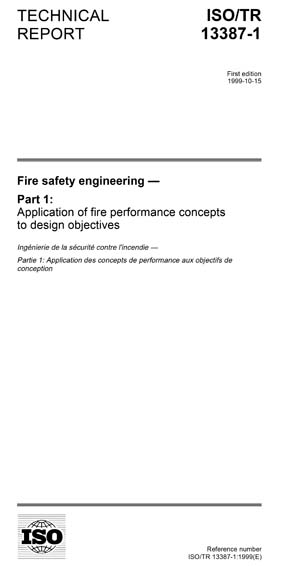Historical
ISO/TR 13387-1:1999
Fire safety engineering -- Part 1: Application of fire performance concepts to design objectives
This part of ISO/TR 13387 describes one framework for the provision of an engineered approach to the achievement of fire safety in buildings, based on the quantification of the behaviour of fire and people. The Technical Report is not intended as a detailed technical design guide, but could be used as the basis for development of such a guide. It indicates the interdependence and interactions between various components of the fire safety system and provides an indication of the totality of fire safety design. It is appropriate for various alternative single or multiple design objectives.
The basic principles given in this part of ISO/TR 13387, together with the guidance on detailed aspects of fire safety design given in other parts, may be applied to all types of building and their use. Principally this Part applies to common types of building such as dwellings, office buildings, department stores, schools, hotels, and public-assembly and industrial buildings, new and existing.
The principles, the methodology and many of the calculation tools may be applied to the safe design of many other structures, which may or may not accommodate people, such as tunnels, petrochemical plants, offshore oil/gas installations and transportation systems (railway carriages, aircraft cabins and passenger ships).
This part of ISO/TR 13387 takes into account many factors including building construction, means of escape, human factors, smoke management, detection, alarm and fire suppression and their contribution to the attainment of the fire safety objectives. It provides some alternative approaches to existing codes for fire safety and allows the effect of departures from more prescriptive codes and regulations to be evaluated.
Although the emphasis in this document is on safety of life, the fire safety engineering approach can also be used to assess property loss, business interruption, contamination of the environment and destruction of heritage. It is anticipated that, in the future, this part of ISO/TR 13387 will be broadened to cover, for example, property loss, business interruption, contamination of the environment and destruction of heritage.
International Organization for Standardization [iso]


